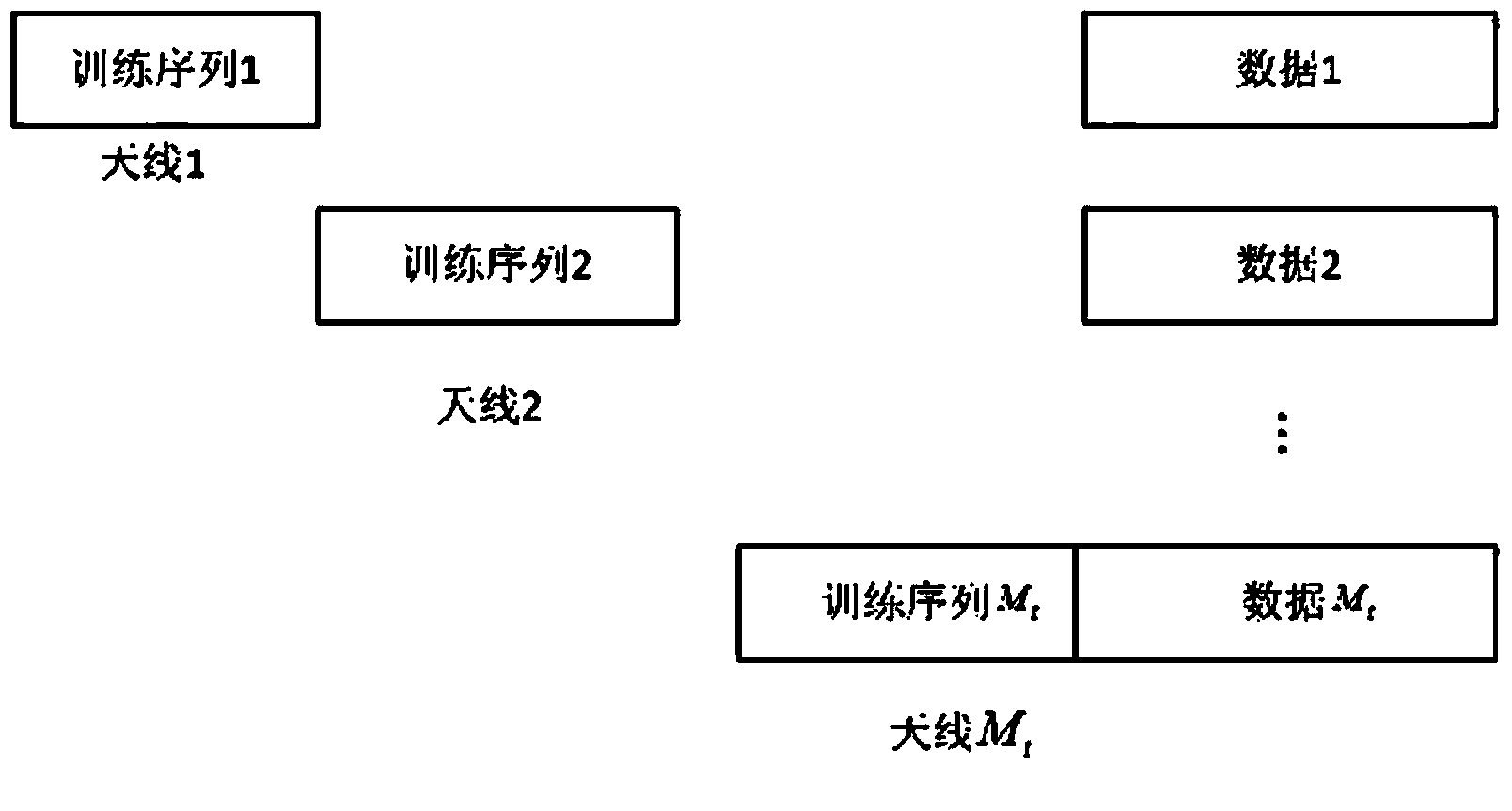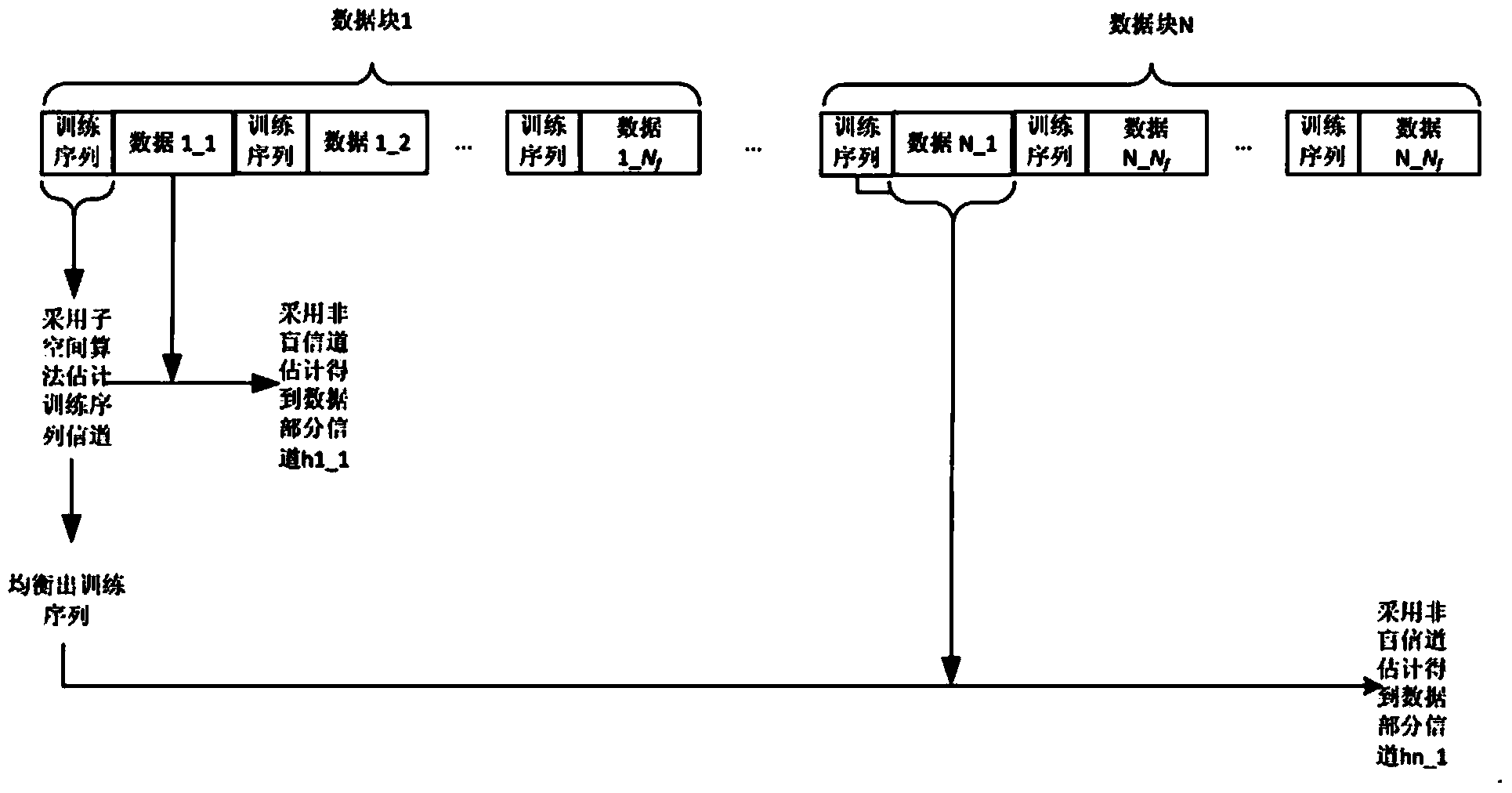Channel ambiguity removing method in MIMO signal blind detection process
A technology of blind detection and ambiguity, which is applied in the directions of space transmit diversity, baseband system components, diversity/multi-antenna systems, etc., and can solve problems such as non-cooperative MIMO communication ambiguity problems
- Summary
- Abstract
- Description
- Claims
- Application Information
AI Technical Summary
Problems solved by technology
Method used
Image
Examples
Embodiment Construction
[0059] Hereinafter, the present invention will be specifically introduced with reference to the drawings and specific embodiments.
[0060] Reference Figure 1 to Figure 4 In the method for removing channel ambiguity in blind detection of MIMO signals of the present invention, the implementation steps are as follows:
[0061] Step 1. Divide the channel matrix of the MIMO system into M t SIMO system channel
[0062] Suppose an M t ×M r MIMO system, each transmitting antenna to all receiving antennas is a SIMO system, we can regard a MIMO system as M t It is composed of a SIMO system, so the channel matrix of the MIMO system can be divided into M t The channels of each SIMO system are estimated individually.
[0063] Step 2. Intercept the received signal of each SIMO system
[0064] Based on the time domain orthogonality of the training sequence, time synchronization technology can be used to determine the starting position of the training sequence on each transmit antenna And cutoff pos...
PUM
 Login to View More
Login to View More Abstract
Description
Claims
Application Information
 Login to View More
Login to View More - R&D
- Intellectual Property
- Life Sciences
- Materials
- Tech Scout
- Unparalleled Data Quality
- Higher Quality Content
- 60% Fewer Hallucinations
Browse by: Latest US Patents, China's latest patents, Technical Efficacy Thesaurus, Application Domain, Technology Topic, Popular Technical Reports.
© 2025 PatSnap. All rights reserved.Legal|Privacy policy|Modern Slavery Act Transparency Statement|Sitemap|About US| Contact US: help@patsnap.com



